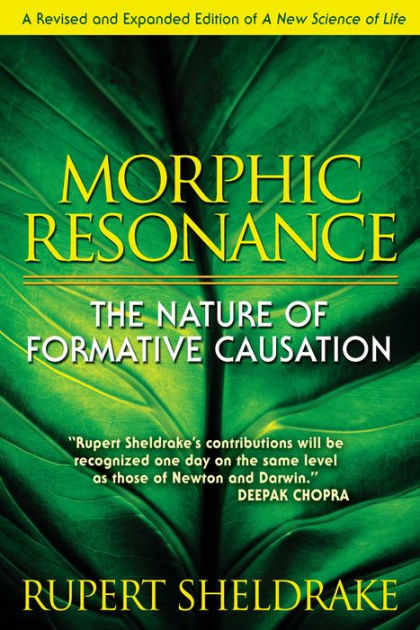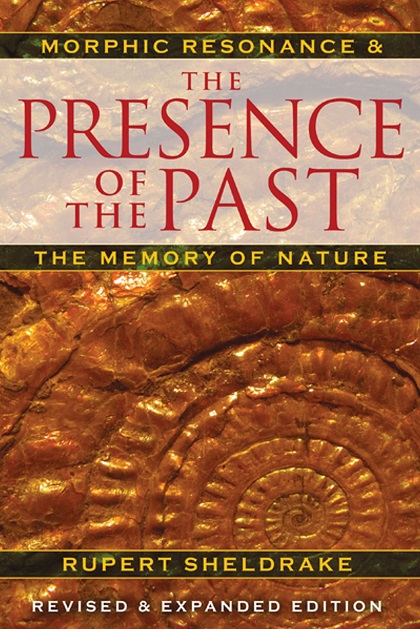|
home | what's new | other sites | contact | about |
|||
|
Word Gems exploring self-realization, sacred personhood, and full humanity
Dr. Rupert Sheldrake's What is Morphic Resonance?
return to "Evolution Controversy" contents page
Editor's note: The following is a transcription of Dr. Sheldrake's lecture, "The Biology Of Transformation: The Field," which might be viewed on Youtube.
So, how do these fields evolve? Living organisms evolve. Old-style science isn’t really a very evolutionary subject. We now know that the entire cosmos is evolutionary [i.e., the entire universe is evolving]. But how do fields evolve? They can’t just be “in the genes” because they’re what organize the genes. So, they can’t be inherited genetically. They can’t just be platonic equations, equations somehow beyond time and space, because fields evolve: dinosaurs came into being, they’re now extinct; animals, birds came from dinosaurs, the fields of birds evolved, they weren’t all there at the moment of the Big Bang or even at the origin of life on Earth. How do they evolve and change in Time? They have a kind of history within them. The suggestion I make is that morphic fields have a kind of memory given by a process called morphic resonance. Morphic resonance is the influence of similar patterns of activity on subsequent patterns of activity across space and time. What matters is similarity – doesn’t matter about distance in space and time. Anything that’s happened before, in a self-organizing system, will make it easier for that to happen again. So, there’s a kind of collective memory in every kind of thing. Each species of plant has a kind of collective memory; each species of animal has a kind of collective memory – a memory of form of the way the organism develops, and a memory of behavior, the collective memory of animals are their instincts, their inherited patterns of behavior. And we, of course, have a collective memory, as well, what Jung called the Collective Unconscious. So, this collective memory is a key feature of all of Nature. The whole of Nature is really a matter of habit. And I see the so-called Laws of Nature as more like habits. Well, I think, in fact, whether we like it or not, that’s a view that everybody’s going to have to consider sooner or later. Old-style science was built on the idea that the “laws” of Nature were completely fixed. They used to think that Nature is eternal, the laws of Nature are eternal, matter and energy are eternal, and it’s just a matter of things repeating in endless cycles, and so forth. But evolution tells us something completely different. The laws of Nature can’t be eternal, the universe is not eternal. So, the laws of Nature are not eternal, and if the whole universe is evolving, at least the laws have to evolve, but better than “law” is the idea of habit. So, I’m suggesting the “laws” of Nature are more like habits. The morphic fields have a kind of inherent memory. So, everything has this kind of memory, even crystals. What this means is that if you make a new kind of crystal that’s never existed before, there won’t be a morphic field for that crystal form – you have to wait for one to come into being. But if you keep crystallizing the same thing, over and over again, making crystals all over the world, it’ll get easier and easier to crystallize. Things will form more readily. This is known to happen in the case of crystals. They get easier to crystallize the more often they’re made. Chemists usually explain this by saying, fragments of previous crystals travel around the world on the clothing or beards of migrant chemists [laughter of audience] and infect crystallization dishes in other laboratories; or, if there haven’t been any migrant chemists, they move around as invisible dust particles in the atmosphere. But what I’m saying is that this would happen even if the dust particles are filtered out and if migrant chemists are rigorously excluded [laughter]. Things will get easier to crystallize because of morphic resonance.
Editor’s note: To restate: “Morphic Resonance” refers to a collective memory in nature. Similar entities both learn from and add to the collective memory, and influence each other across space and time "non-locally," that is, instantaneously, faster than the speed of light. The morphic fields are, in fact, quantum fields of possibility. The concept of "morphic resonance" is part of a larger view which sees the entire universe as evolving and non-static. As such, there are no "laws" of nature -- which is an anthropomorphism -- but, instead, the regularities we see in the cosmos are more like "habits," for, the evidence suggests, these so-called "laws" change over time. See Rupert's book, "Science Set Free."
|
|||
|
|

